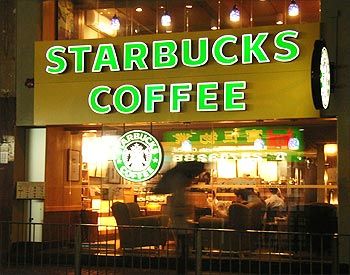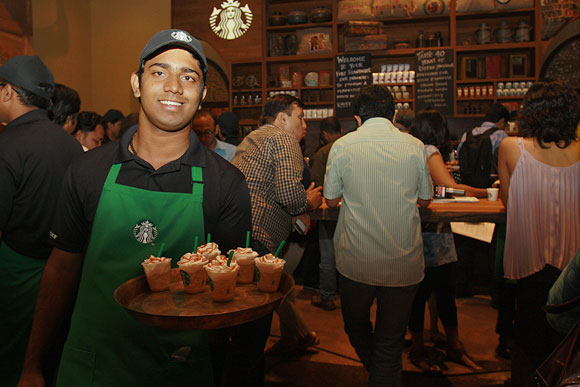 The all-American coffee chain says it will innovate with its menu, formats and promotional strategies to build its brand in the country
The all-American coffee chain says it will innovate with its menu, formats and promotional strategies to build its brand in the country
Across the world, big brands have had a bruising couple of years as small, local brands have used size, geography and e-commerce to grow at their expense.
According to the recently launched Nielsen Global Brand-Origin Survey (May 2016), local brands the world over are surging over global brands especially in food and beverages.
At Starbucks, now in its fifth year in India where it has a partnership with the Tata group, this understanding is probably driving its experimentation with store formats, menus and brand development strategies.
Despite its unmistakable association with the American way of life, the brand wants to send an emphatic signal about its Indian connections.
Sumitro Ghosh, CEO of Tata Starbucks, says, “Walk over to the counter and you will see a number of food items catering to the Indian palate.” This summer, many stores introduced a unique alphonso Frappuccino, he adds.
But, therein lies an interesting story. The stores also brought in an all-American favourite, Smores Frappuccino which blends marshmallows, cream and chocolate into the coffee at the same time.
Guess what sold the most—the American version. So there is really no telling how customers respond to food, but Starbucks will continue to innovate, Ghosh says.
An American in India
“The beginnings (of the brand) are obviously American. However, being a global brand with 22,000 plus stores, we have learnt a lot in terms of producing and selling coffee in different countries,” says Ghosh.
Ghosh believes there is a lot to learn from the brand’s early years in the US.
“In a way, the journey is not very different here than when we started in the US. People didn’t understand premium coffee and we had to begin by teaching people about high quality coffee.
There are more similarities than differences,” he says.
In India, the most popular coffee is still cappuccino because few know the difference between the varieties on the menu.
But, he believes that will change as store employees (Starbucks partners, he says) step in and fill in the gaps.
Ask him about the filter coffee drinking tradition in the country and he says, “That is something we are not afraid of getting into.”
Starbucks recently introduced a specialty tea Teavana into India, which he says takes into account the popularity of tea in the country.
But, it is not just bringing the American variants into India, Starbucks is selling single origin, premium coffee sourced from India in the US, too.
Tata Coffee is being sold in its flagship store in Seattle, US, he points out.
Pricing it right
Creating a market for premium coffee is a challenge.
Ghosh says, “It has been a concern even in the US. We look at that (pricing strategy) in every market but at the end of the day, the perception of our price is more than what it is and that is not deliberate.”
He believes that the way Starbucks presents the coffee is what distinguishes it and helps justify the price.
He believes that the brand is quite competitive with the local chains when it comes to the basic coffee; the handcrafted variants are priced higher and customers value the difference, he says.
Currently, Tata Starbucks has 84 stores in six Indian cities, mostly in metros (Mumbai alone having 35 stores).
It opened 20-25 stores every year on an average, although last year was slow with just 10 stores.
This is no slowdown, Ghosh says, but more of a strategic pause.
The brand is taking time to measure the opportunities in the next tier of towns.
Starbucks India is still way behind when compared to the 1,600 plus stores that local chain Café Coffee Day has.
Is it that the local brand has penetrated faster and deeper because it has hit the right formula on price.
Ghosh does not see it that way; he says, “Infrastructure is the largest bottleneck we have.
"We want to have scale and that is something we need to work out.”
Playing to all sizes
It is important for the brand to be flexible to expand.
Hence, the brand’s experimentation with retail formats.
From kiosks to cafes inside corporate parks and malls to stand-alone outlets, the company, Ghosh says, is willing to look at every option.
The store has decided to go where the customers are, Ghosh says, pointing out the number of outlets that they have opened inside corporate parks.
Adding stores is not the only way the brand is getting out to areas where it does not have a retail presence.
A recent tie-up with Vistara (a joint venture between the Tata group and Singapore Airlines) means that Starbucks will also be served to its fliers.
By next year, Ghosh says, they will provide more opportunities to more communities and partners.
“We are going to get more India into our menu, experiment and develop things.” India is the fastest growing international market in the history of Starbucks, he says, and the brand is here for the long haul.










